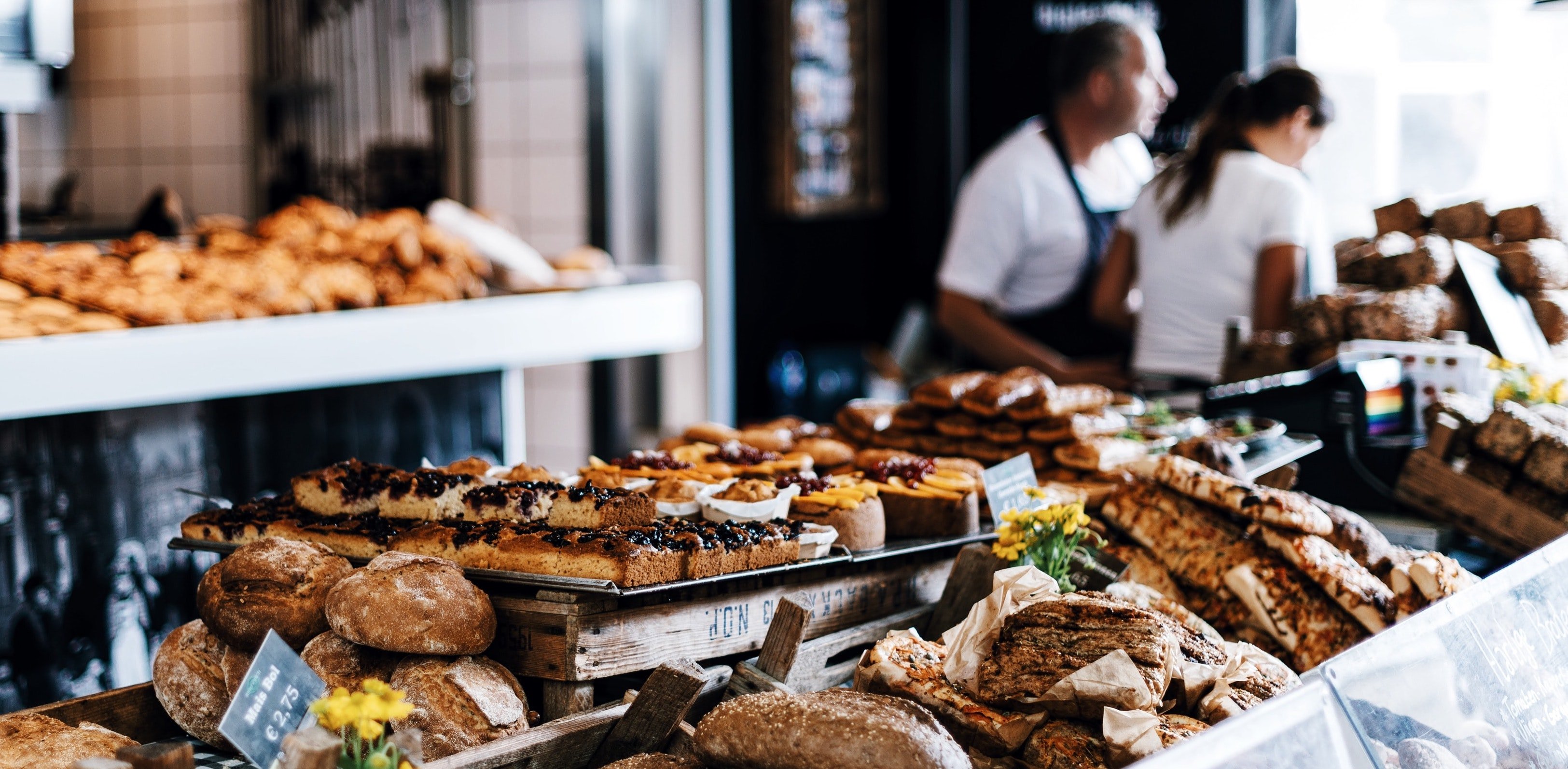There’s no doubt the Coronavirus pandemic is driving behavioural change, whether your immediate suburb, region or country is in lockdown, or not. Thanks to COVID-19, many of us are living more local lives.
Suburbia is undergoing a resurgence as people look to avoid public transport and other crowded locations, while city and downtown areas are suffering.
Spending in cafes in areas close to Sydney's central business district is down as much as 7% according to data from AlphaBeta, while similar businesses in outer suburbs have registered increases of more than 10%. According to SGS Economics, at least $400 million in spending on incidentals has been diverted from the CBD to the suburbs since March.
In Britain, there’s growing evidence that shoppers are avoiding town and city centres, where the pandemic is being touted as a possible saviour of the high street.
Almost two in five Brits (38%) have shopped locally to some degree for food and drink since the pandemic struck, according to YouGov. Chains on the local high street experienced sales increases, up 30%, in the three months to June 20, according to Kantar. Meanwhile, two in three adults (62%) who have been shopping since restrictions were partially lifted have bought non-essential goods locally.
In the US, the pandemic has also given people a greater appreciation for local shops and businesses. According to brand experience agency Big Red Rooster, other changes to shopping habits have included: the rise of contactless shopping; the elimination of free samples; less experimentation and more repurchasing; growth in home deliveries; and of course, increasing online sales.
Many of these habits will live on once the pandemic is over, according to Accenture, which says while purchases are currently focused on basic needs, people are shopping more consciously, buying local and are embracing digital commerce.
The desire to shop local is reflected in both the products consumers buy (locally sourced) and the way they shop (supporting community stores). While some sectors, such as the travel industry, remain disrupted, others present an opportunity, particularly for franchise chains - especially those with stores in suburban areas.
According to the Franchise Council of Australia data, 46% of survey respondents reported revenue in the June 2020 quarter was less than 50% of revenue in the June 2019 quarter, with the hardest hit businesses including cafes, restaurants, fitness clubs, accommodation and child-related services.

However, 35% of respondents recorded increases in June revenues, with takeaway food, maintenance, health, freight and baked goods-related franchises reporting improved trading conditions.
Joint Baker’s Delight CEOs David and Elise Gillespie noticed a clear shift towards ‘shopping local’ and increased demand for simple comfort food with sales up by around 10%.
“We saw a lot of people wanting to support local businesses like butchers, bakers and green grocers, rather than visiting the major centres which in turn, saw our bakeries on strip locations and small neighbourhood centres perform very well,” said Gillespie.
So how can other franchises take advantage of the ‘shop local’ phenomenon and other consumer trends to survive and thrive?
- Shop safely
Consumers are favouring places where they feel safe, able to socially distance from other shoppers and can observe a commitment from the brand in question to providing a safe environment.
The vast majority of US adults say that after making sure the store they visit has the item they want (87%) the most important factor in deciding where to go shopping for non-essential goods is that stores promote social distancing (81%).
Social distancing signs, hygiene posters, stickers and other collateral should be prominently displayed and kept up-to-date according to changing restrictions.
Tip: Franchisees must be able to update and print these quickly to keep up with changing conditions. Current messaging around safety and hygiene will provide reassurance to nervous shoppers. Ensure those messages are prominent on your website, local billboards and other online channels as well as physical outlets.
- Adapt quickly
When maintenance franchise Hire a Hubby experienced a decline in handyman services, it began installing perspex shields in shops and supermarkets. Fast food franchise McDonald’s sold milk and bread from their drive-through counters. Everyone benefits if franchisors can collect and share stories about successful instances of franchisees pivoting and adapting to offer new services throughout the network.
Tip: Don’t neglect internal communications. Newsletters, town hall-style audio conferences or video conferences and other channels can help get the word out quickly. Stick to easily reproducible formats for speed of communication.
- Support community
People want to support local community stores. That means franchisors, particularly those with outlets in suburban communities, should promote the owners of local franchises and emphasise that supporting them helps support the community. Franchisees need to publicise their own efforts to build ties with the community, whether that is by supporting local school fundraising efforts, sponsoring the soccer team or other activities.
Tip: Provide different themes and marketing collateral templates for signage or posters to enable franchisees to localize and personalize the way they execute this message, while staying on brand.
- Show empathy
We’re all developing new habits during this pandemic - and we’re all in this together. Showing your brand understands this is self-affirming for your customers and may reflect back to them something they haven’t yet noticed. A good example of this is a New Zealand television commercial telco Optus that shows kids in an apartment building building a race track that goes from apartment to apartment, while Dads videoconference in a jacket, tie and pyjama pants, and mums cut their kids’ hair in the kitchen. Reflect on how your service or product is supporting new habits and adapt your marketing to suit.
Tip: Carry that message and imagery through to the point of sale, whether it’s website imagery, in-store signage or local brochures.
- Source locally
Shoppers are making more conscious decisions about sustainable purchasing and sourcing materials and ingredients locally. Chains should develop or promote a narrative around this topic that explains their own credentials, or how they’re supporting organizations that promote this cause.
Tip: Provide national marketing collateral, such as brochures, social tiles and other elements, that can promote the brand narrative while publicizing the local franchise.
- Relevant offers
Sales and discounts are not high on the priority list following lockdown. Meanwhile, more men are claiming to be the primary shopper during the pandemic, and they tend to display different shopping behaviours, favouring efficient repurchasing over browsing.
Keep up-to-date with how your customer has changed, what their priorities are, and ensure you’re tailoring offers to suit those new requirements. This may include an increased focus on loyalty programs or bulk purchase deals offered to past customers rather than flash sales. Work with your local franchisees to better understand the particular characteristics of their local customer base.
Tip: Ensure your email offers are supported with localized collateral. The easier it is for time-poor franchisees to support an offer, the more likely they are to close that loop for your regular customers.
- Be virtual and social
Further shifts to virtual shopping alternatives are expected. Many businesses have already made the shift to offering ecommerce and online fulfilment and delivery services. Virtual events - such as tastings and product launches - present another opportunity. These can be supported with physical deliveries and services.
Meanwhile, marketers are spending more and more budget on social channels. Franchisors can utilize these channels in big numbers with the right approach. For example, one post, from Baker’s Delight, that talked about ‘baking all the rolls you need’ during toilet paper shortages, reached 2 million organic views.
Tip: Provide customisable templates, or brand guidelines and social posting guidelines, to enable franchisees to make full use of the resources you’re providing. Ask your franchisees to repost or share relevant head office content to drive more social engagement.
It’s tough out there for many franchises. The good news is that brands that advertise during recessionary periods tend to recover faster: and franchises have the dual advantages of a head office marketing effort that can be amplified and extended with organized, on-brand, up-to-date local area marketing activities.
With careful messaging and a concerted effort to provide franchisees with the local marketing support they need, franchises are in the box seat to convert increased interest in community and local commerce into sales.
